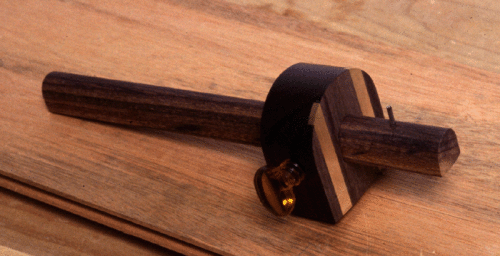At the September meeting, Joel Moskowitz from Tools for Working Wood spoke about marking gauges. Although there are many types of marking gauges on the market, he prefers pin gauges over cutting gauges.

Pin gauges differ from cutting gauges in the shape of the part that does the actual marking. Pin gauges have, well, pins that are relatively sharp. Cutting gauges make parks in the workpiece with a knife edge.
Joel feels that the marks left with pins are easier to deal with than the marks left with a knife edge. Because the pins are not knife sharp, they leave a shallower line that can be easily removed with planing or sanding later on in the project.
One criticism of pin gauges is that it is hard to make a clean line with a pin, compared to a gauge that makes a knife cut. Joel demonstrated a good technique for using a pin gauge effectively. Instead of holding the gauge so that the pin is perpendicular to the surface of the wood, which will cause a lot of scratching and chatter as you try to make your mark, rotate the gauge so that the pin trails behind as you move the gauge, so that it makes an acute angle with the surface of the wood. This also gives you a lot of control in how deep a marking line is left by altering the pressure on the gauge.